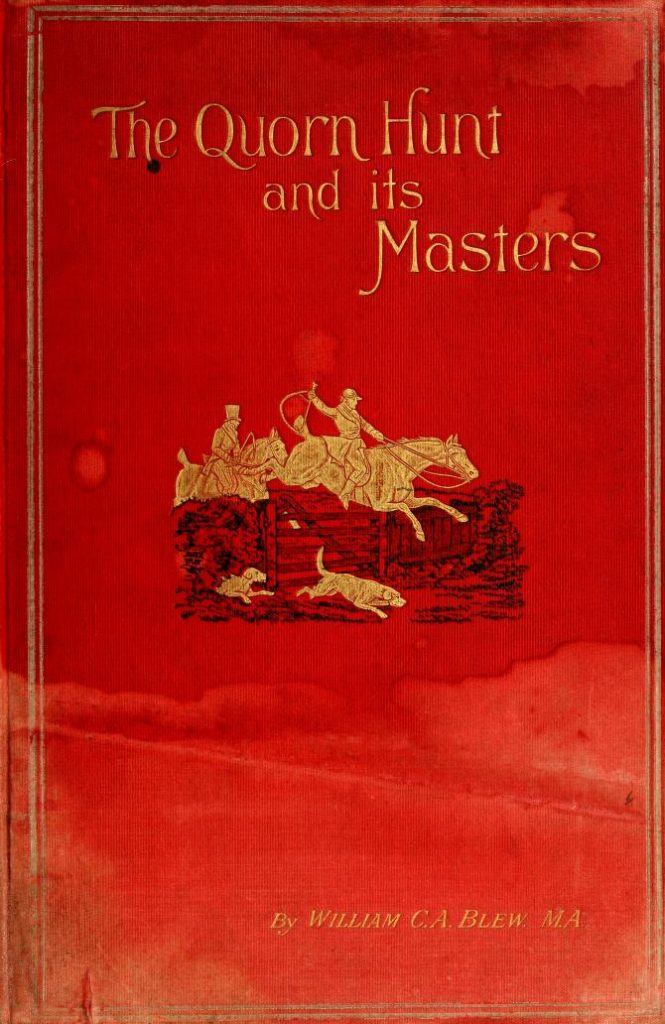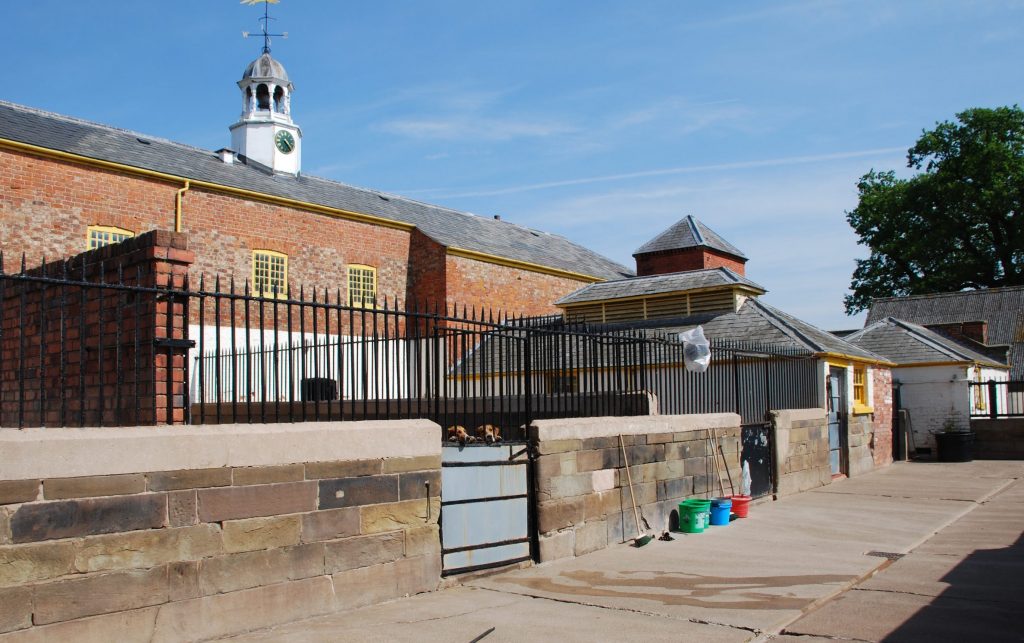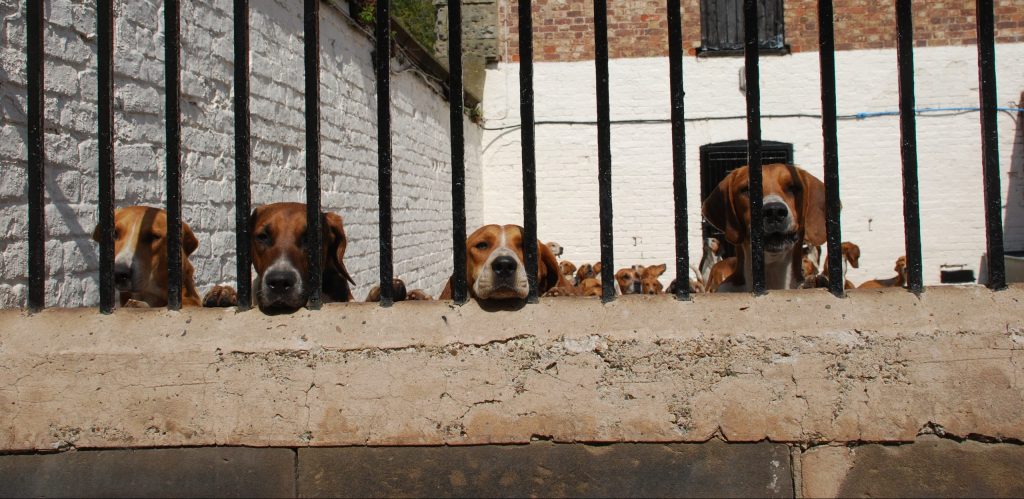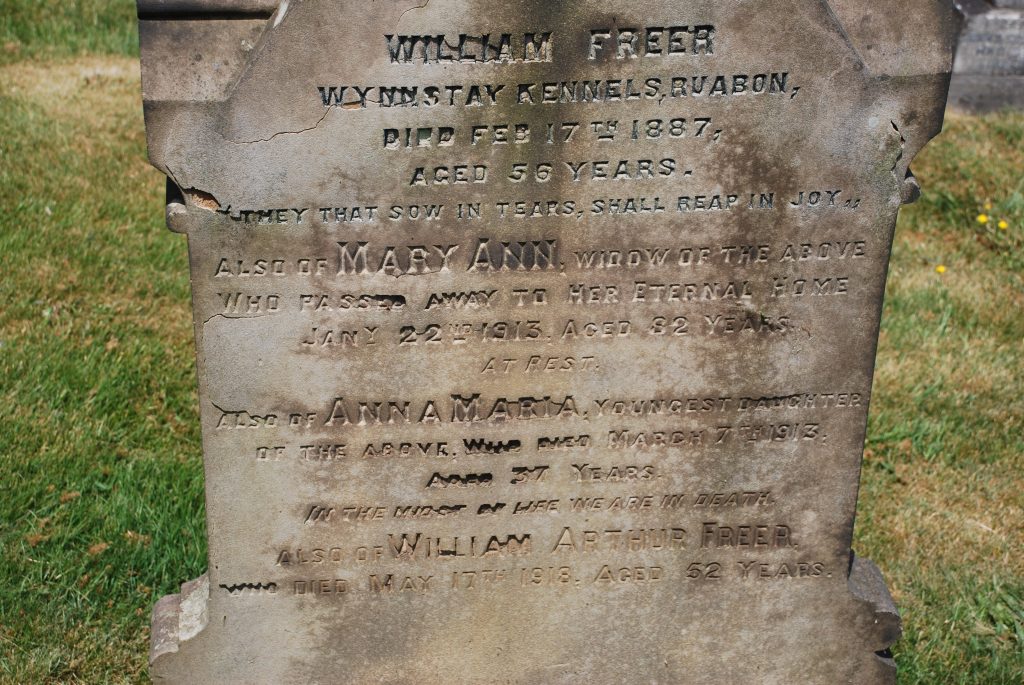I’m Paul’s second cousin and we share Frederick Blacknell and Clara Freer as our great-grandparents. I took up family history research earlier this year and have been amazed at what there is out there to find.
The internet is a fantastic resource! I knew that Paul had done a lot of work on the Blacknell/Freer ancestry so didn’t initially work on this part of my family but once I had worked out the rest of my family back four generations I started to look in more detail at the kind of lives my ancestors lived especially in the context of the social history of the time. Looking at Paul’s research I was very interested to see that our great-great grandfather William Freer, Clara’s father, had been born in Quorndon, Leicestershire in 1830 but was buried in Ruabon, Denbighshire when he died in 1887 aged 56. What had made him move all of that distance?
Looking at information available from the censuses Paul had already found out that William was a labourer at kennels in Quorndon in 1851 and was again described as a dog feeder in 1871, although the move to Wales had taken place and his address was now given as Wynnstay Kennels. So that meant that the move had happened between 1851 and 1871. However, a more detailed look at the 1871 census revealed that William’s daughter Helen (aged 11) had been born in Quorndon whilst their son John (aged 9) was recorded as having been born in Ruabon. The 1861 census shows the family was now resident at the Wynnstay Kennels and birth certificates for Jane and John further confirm this. This therefore narrowed the date of the move to some time between July 1859 and April 1861 when William was between 29-30 years old (he was born between 7th June 1830 and 12th September 1830).
And what of the dog feeding? What sort of dogs would you employ someone to feed? I decided to take up the hunt. And hunt was exactly the right word! A bit of research on the internet revealed Quorndon (or Quorn as it is now known – the name having been shortened in the 20th century to avoid ongoing confusion with its near neighbour Quarndon) as the home of one of the world’s oldest and most well known fox hunts. Dog feeder for the Quorndon Hunt made perfect sense! Wiki reports that the Quorn Hunt was first established in 1696 and was housed in the village of Quorn between 1753 and 1904, so that fitted in with William’s time in the village. So why the move to Ruabon?

From Wiki I moved to an electronic scan of a book called ‘The Quorn Hunt and It’s Masters’ written in 1899. This book gives a detailed description of the life and times of the Quorn Hunt and includes a chapter on the hounds and the kennels together with maps and drawings. There is a fabulous description of the diet of the hounds and how the animals would only eat meat that had been well-hung! Reading the relevant pages really gave me a sense of what it all must have been like. However, the most important jewel that the book divulged was the fact that somewhere along the line hounds had been sold by the Quorndon Hunt to none other that Sir Watkin Wynn. On seeing his name the penny dropped. Watkin (Williams) Wynn was the local landowner in Ruabon and the owner of the Wynnstay Estate. William Freer had most likely made the move to Wales with a pack of hounds!
A further search on the internet revealed the Wynnstay Kennels as currently designated as listed buildings – there was no information of what there was remaining but I decided that the next time I was visiting Ruabon I would try and see what was still there. So one bright May day earlier this year I set out with my mother to see if we could find the kennels and gain a little more insight into William and his occupation. We drove to the tiny hamlet of Rhosymadoc outside Ruabon and on the edge of the Wynnstay Estate and asked around if anyone knew where the kennels might be. No one did although someone knew of a Kennel Cottage. We found the cottage, an ordinary building quite close to the road and it seemed like that was the end of the trail. There was, however, a track passing alongside the cottage and without much hope but in the spirit of adventure I decided to drive up the track and see what was there.

At the end of the track there turned out to be a large brick building. I parked up and as I got out of the car someone came over and asked if they could help. I explained my reasons for being there and was told that this was, indeed the Wynnstay Kennels. The very nice man offered to show my mother and myself inside the building and we eagerly accepted. But still the final penny hadn’t dropped. It was only when he opened the door that I realised that the kennels are still in use; the sound of a few dozen hounds barking loudly was deafening!

Although fox hunting is now banned the hounds are used for drag racing and probably kept in much the same way as they were a hundred and fifty years ago. Our guide was of the opinion that the kennels had probably changed little since William’s time. Standing there with the sound of baying hounds and the smell of dog it was fantastic to imagine what William’s life must have been like. I expect it was quite tough. Feeding maybe a hundred animals and ‘mucking out’ the kennels come rain or shine must have been hard work. He must surely have been a dog-lover!
So, what a fabulous find. But there was still one last tiny gem left in the day. On the way home my mother suggested we stop at the local graveyard to see my great-grandfather’s (William’s son-in-law) grave. On route to the site of my great-grandfather’s grave I stopped in my tracks. There was William’s grave, as clear as daylight.

William Freer
Ruabon Cemetery
Wynnstay Kennels
Died Feb 17th 1887, aged 56 years.
Also buried with him was his widow Mary Ann (née Elliott) and children Anna Maria and William Arthur; another tiny piece of the family history jigsaw. My mother was unaware of its existence and was as delighted with the find as I was.
So one small puzzle solved but many more to go.
One reply on “Paws for thought”
Helen was born in June 1859 in Quorndon and the 1861 census shows the family in Ruabon in April 1861